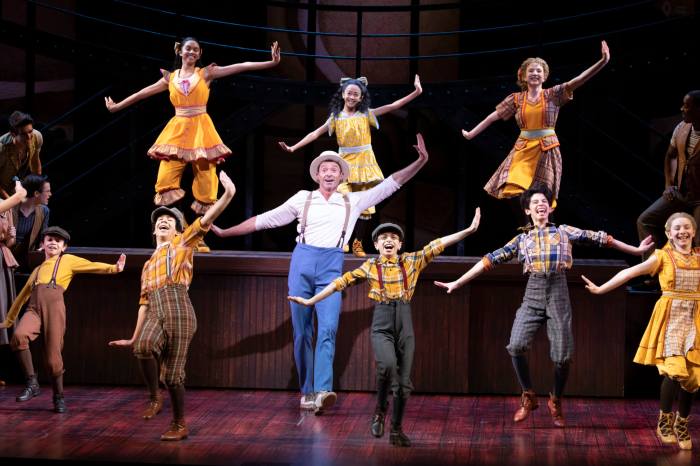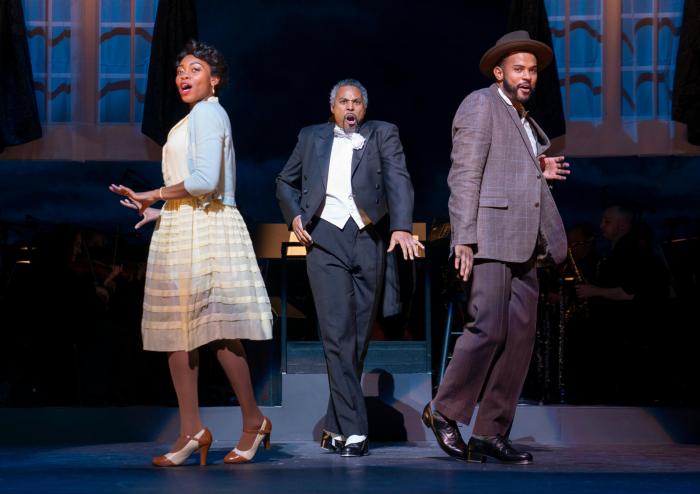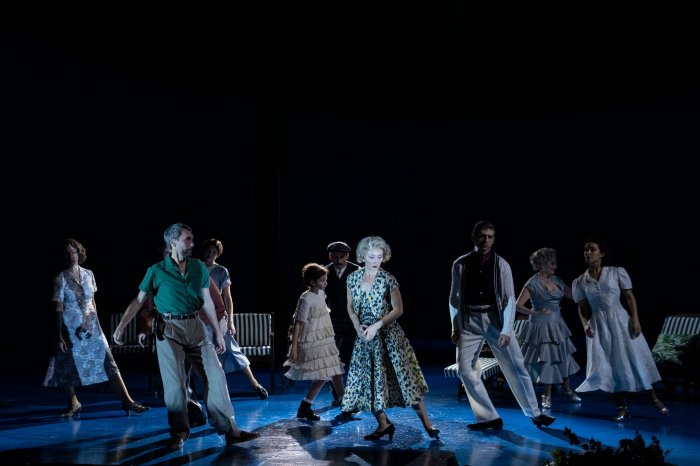The glam, glossy, and tongue-in-cheek new jukebox musical “& Juliet” proposes an intriguing solution to the dilemma faced every year by high school English teachers who struggle over how to get their students interested in Shakespeare: have them write a jukebox musical variation of a Shakespeare play in which their favorite pop songs are integrated into the plot and dialogue.
“& Juliet” arrives on Broadway after premiering in London. Rather than being built around the discography of a single singer-songwriter or band (ranging from ABBA or Jimmy Buffet), it uses mega-hit, teen audience pop songs (from the late nineties to present day), which all happen to have music and lyrics by Max Martin, a Swedish record producer and songwriter.
The songs (many of which you can’t help but already know due to their all-around ubiquity) have been popularized by artists such as Britney Spears (“…Baby One More Time,” “Oops!…I Did It Again,” “Stronger”), the Backstreet Boys (“Larger than Life,” “I Want It That Way,” “Show Me the Meaning of Being Lonely”), Katy Perry (“I Kissed a Girl,” “Roar”), and Ariana Grande (“Problem,” “Break Free”).
And that’s on top of songs associated with Jessie J (“Domino”), Demi Lovato (“Confident”), Bon Jovi (“It’s My Life”), Kelly Clarkson (“Since U Been Gone”), Justin Timberlake (“Can’t Stop the Feeling!”), and more. As in “Moulin Rouge!,” “& Juliet” emphasizes the jukebox of the jukebox musical – but its agenda does not stop there.
Set on opening night of “Romeo & Juliet,” a fresh-faced William Shakespeare (Stark Sands) takes a victory lap and introduces his little-known wife Anne Hathaway (Betsy Wolfe), who objects to the play’s ending. The married pair then proceed to create a version of “Romeo & Juliet” in which Juliet (Lorna Courtney) does not die at the end and instead travels with her Nurse (Melanie La Barrie) to Paris to seek out new opportunities. Juliet is joined by a whole bunch of pals and – eventually – Romeo himself, who is also revived from the dead.
As suggested by its combination of contemporary pop and Elizabethan Renaissance, “& Juliet” takes place in a kind of trendy and luxurious otherworld, full of clubbing, moving lights, and back-up dance choreography.
David West Read’s book, which celebrates individuality, women’s rights, and values of diversity, equality, and inclusion, is winding in nature (covering the romances of no less than four couples) and quickly becomes tedious and didactic. However, many of the songs are inserted in ways that are surprising and clever, displaying a kind of maturity within the jukebox musical genre.
The characterizations are one-dimensional, but the performances are still fresh, especially Wolfe (whose eager spirit and comic nimbleness really carries the show through trivial plot developments) and Tony winner Paulo Szot, who gives a gleefully over-the-top performance as the father of one the young lovers.
All things considered, the fashionable flare and youthful exuberance on display in “& Juliet” (as directed by Luke Sheppard and choreographed by Jennifer Weber) are often entrancing, and Martin’s songs (as arranged and orchestrated by Bill Sherman) are undeniably catchy. Perhaps the next karaoke makeover of a Shakespeare play will be even better.
Stephen Sondheim Theatre, 124 W. 43rd St. andjulietbroadway.com.


















